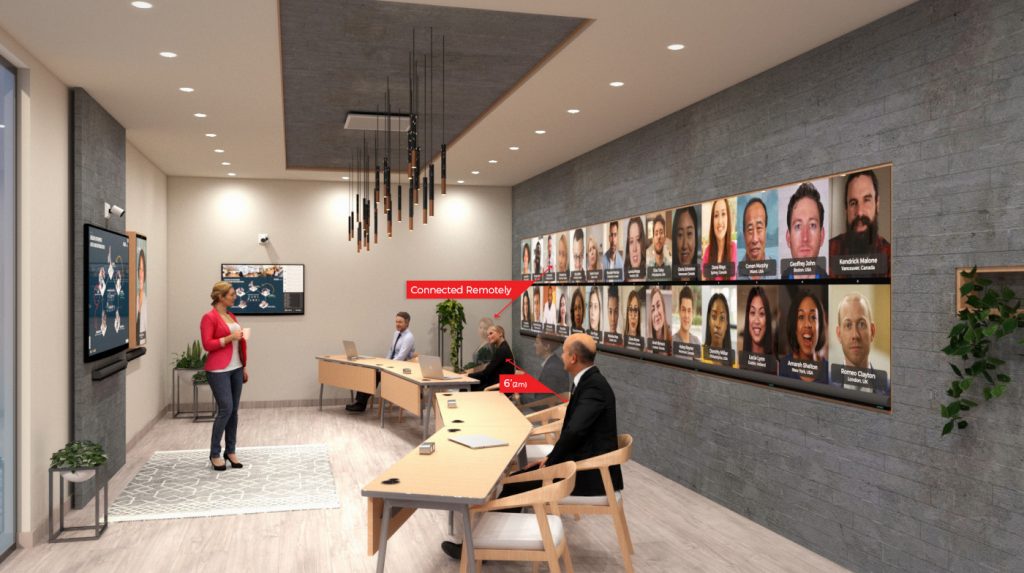Classrooms will have to adapt.
If you tied my right hand behind my back, would that make me left-handed?
That question helps get at the shifts we’ve seen in consumer behavior over the last 12 months. People have found themselves unable to partake in their normal activities. The biggest disruptions have happened in education and higher learning. At every level—from elementary school to professional education—people have been shut out of physical classrooms and thrown into Zoom rooms and webinars out of necessity. How we learn and absorb material has changed. Instructors and students have been forced to connect in ad-hoc virtual meeting spaces to exchange materials and ideas.
The world is now recovering from the pandemic. As it does, the concept of “presence” has become the defining focus for the accelerated adoption of remote learning.
How We Consume & Create Content
Binge viewing before and during the novel coronavirus (COVID-19) pandemic has retrained us to consume content on our own terms, for as long as we want, whenever we want. Consider the following facts:
- In 2020, YouTube was one of the top destinations for learning, with 82 percent of the people on the video-sharing site using it to learn something new.
- Livestreaming has become one of the fastest-growing formats for content consumption, growing by 93 percent. Moreover, there’s an average viewing time of 26.4 minutes per session.
Becoming An ‘Expert’ At Remote Collaboration
Everyone across all industries—from education, to culinary arts, to science, to product marketing—has had to adapt quickly and learn how to collaborate with remote people at scale.
Conference and trade-event organizers have tried (with varying levels of success) to replicate their real-life event experiences by launching virtual-esque web interfaces for content browsing and speaker presentations. Teachers have shifted to Zoom and Google Classroom. Top chefs have begun to sell MasterClass online classes.
Initially, these digital platforms were intended as stopgap measures limited to the duration of the lockdown. However, thanks to the accelerated digital adoption, they’re now the part of the hybrid-collaboration toolset. Solution providers have quickly evolved their products to make them easier to use, offering more flexibility for how to collaborate with both in-person and remote participants in real time.
The Challenge Of Virtual Classrooms
The virtual classrooms of today must address the expectations and content-consumption habits of a world in which people’s digital behaviors have been accelerated five to eight years into the future. It’s no longer a pure play for remote attendees. Solutions must meet the following critical needs of the hybrid-learning model:
- Create a more natural and seamless communication transition between instructors and remote students. (As an example, remote attendees should have the perception that they’re “in the room” along with the rest of the class.)
- Provide remote participants with the ability to see nonverbal communication cues, such as eye contact, with face aligned with body position. (For example, in a lecture hall, when professors address a question, they turn their body and look at the person who asked the question.)
- Provide instructors with a signal/notification to indicate which remote participant is speaking. That way, they can orient their gaze and body position toward the in-room screen on which the remote participant is displayed and toward the camera whose feed the remote participant is viewing.
- Provide for secure document sharing that ensures remote students can’t cheat during exams. This is important because in-person students can be observed physically when they take exams, whereas remote students could potentially “Google the answers” or pay someone else to take the exam.
Ultimately, systems will have to address collaboration tools holistically, integrating them into a seamless platform, all while emulating the remote student being physically present via emotional cues like making eye contact. This is a few steps above a simple videoconference call, and it entails having a room set up specifically to enable students to be “present” even when they aren’t. We might have only just begun to experience this phenomenon, but it’s something to which we’re becoming accustomed.
So, let’s go full circle and return to the opening question. No—forcing someone to use his or her left hand does not make that person left-handed. Once we’re able to return to normal practices, we’ll probably go about our business as we used to, returning to the familiar ways from way back in 2019. Now, though, we’ll have more tools at our disposal and more time to explore the correct formats for content consumption, learning and collaboration.
Why couldn’t a student be remote and take classes? He or she should be able to, and it shouldn’t be a second-class experience. It turns out that COVID-19 was the key to unlocking new potential and new opportunities.
For schools, 100-percent virtual presence might not be needed very much longer. But the new tools to connect virtually will be empowering for parents, teachers and students alike.
To read more from Sound & Communications, click here.
